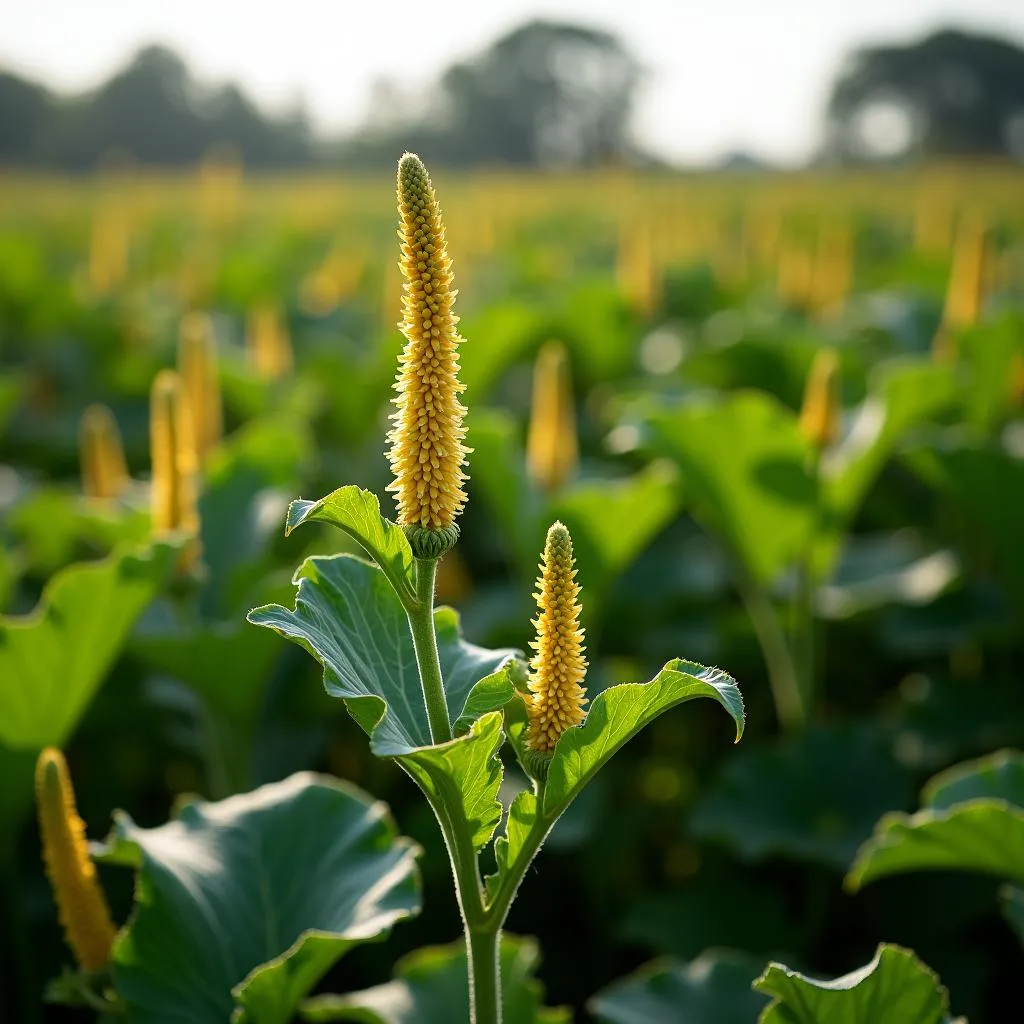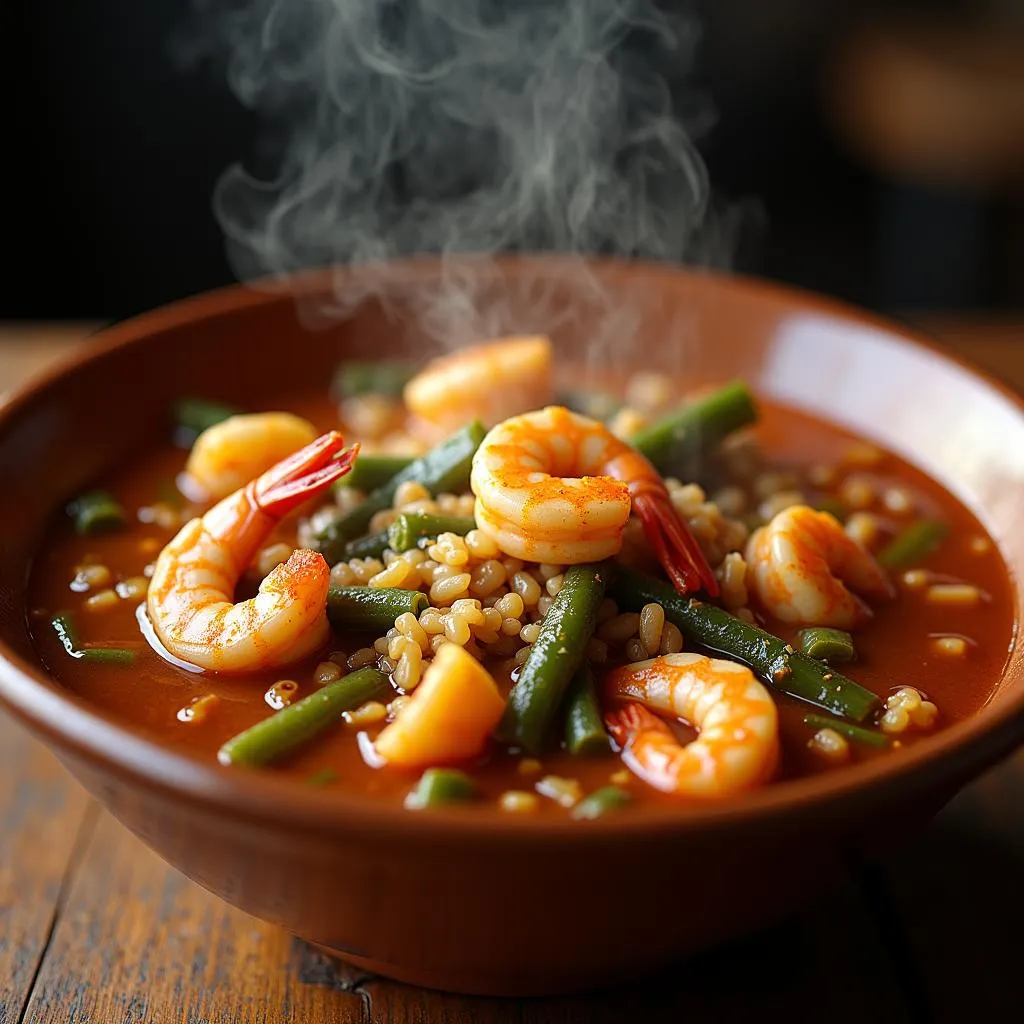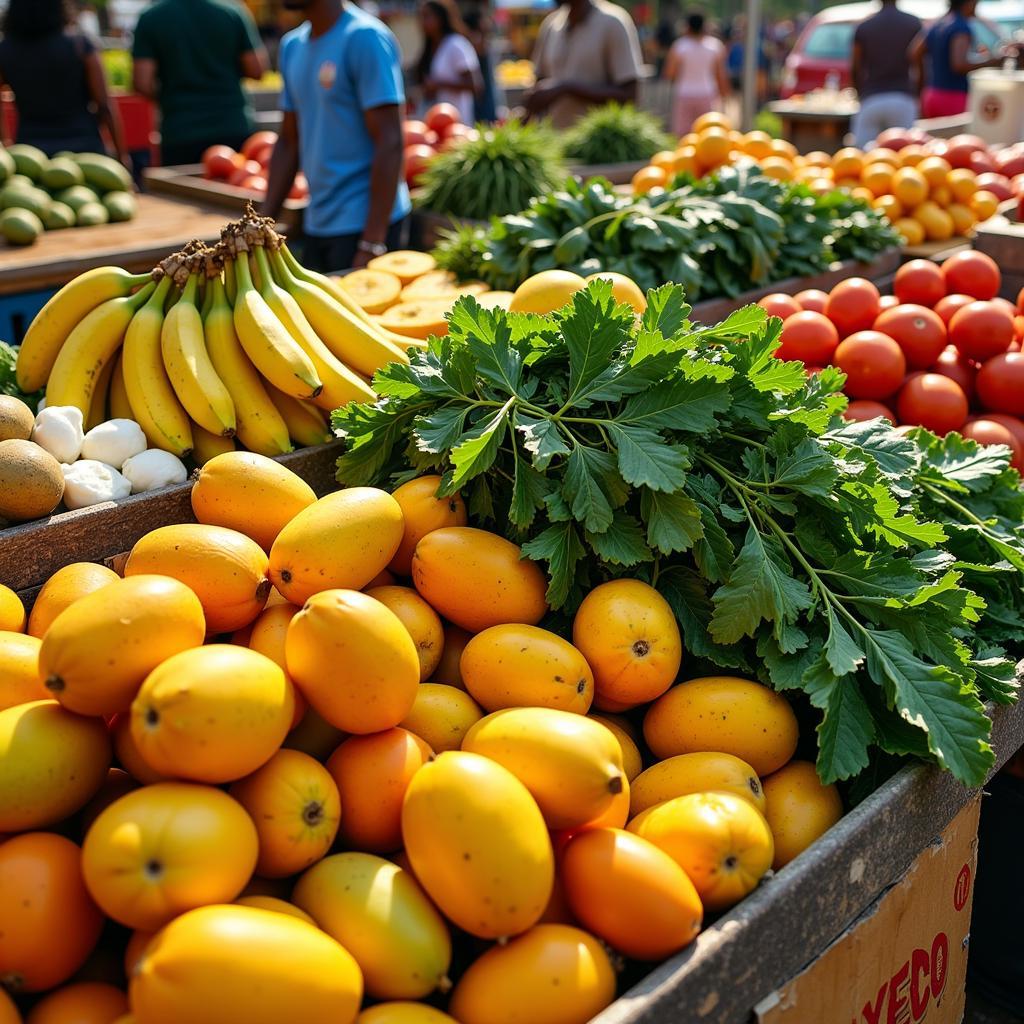African Crops and Slave Cuisine: A History Intertwined
The history of African crops is inextricably linked with the transatlantic slave trade, a dark chapter that forever shaped culinary traditions in the Americas. This journey through time unveils the resilience of African culinary practices and the profound impact of African crops on what we eat today.
From African Soil to New World Tables
When enslaved Africans were forcibly transported across the Atlantic, they carried with them not only their cultures and traditions but also their agricultural knowledge and cherished seeds. These seeds, nurtured in foreign lands, blossomed into essential ingredients that transformed the culinary landscape of the Americas.
 Okra plant in a field
Okra plant in a field
Among the most impactful crops were okra, black-eyed peas, and watermelon, all originating from Africa. Okra, known for its distinctive flavor and thickening properties, became a staple in soul food, particularly in gumbos and stews. Black-eyed peas, with their earthy taste and nutritional value, found their way into rice dishes, salads, and the iconic Hoppin’ John of the Southern United States. Watermelon, a symbol of summer and refreshment, became an integral part of American desserts and beverages.
Adapting and Innovating: The Birth of Slave Cuisine
Forced to work on plantations, enslaved Africans found ingenious ways to adapt their culinary traditions to the limited ingredients available. They combined their knowledge of African crops with indigenous New World ingredients, creating a vibrant and flavorful cuisine that reflected their heritage and resilience.
 African American woman cooking over an open fire
African American woman cooking over an open fire
One-pot meals, born out of practicality and resourcefulness, became a cornerstone of slave cuisine. These dishes, often slow-cooked to maximize flavor and tenderness, featured a medley of African crops like okra, black-eyed peas, and yams, along with locally sourced vegetables and meats. Spices and herbs, reminiscent of African flavors, were used sparingly but effectively to elevate the taste and aroma of these humble yet nourishing meals.
A Legacy of Flavor and Resilience
The culinary legacy of enslaved Africans continues to reverberate in kitchens across the Americas. Dishes like gumbo, jambalaya, and Hoppin’ John, infused with the essence of African crops, are a testament to the enduring impact of African culinary ingenuity.
“The transatlantic slave trade was a tragedy, but it’s important to remember the resilience and resourcefulness of enslaved Africans,” says Dr. Abena Asante, a food historian specializing in the African diaspora. “They transformed hardship into creativity, forging a culinary legacy that continues to inspire and nourish us today.”
 A bowl of gumbo with a spoon
A bowl of gumbo with a spoon
Exploring the history of African Crops And Slave Cuisine unveils a story of resilience, adaptation, and the enduring power of food to connect us to our past. From humble ingredients to iconic dishes, the culinary journey of African crops in the Americas is a testament to the indomitable spirit of those who brought them to life.

